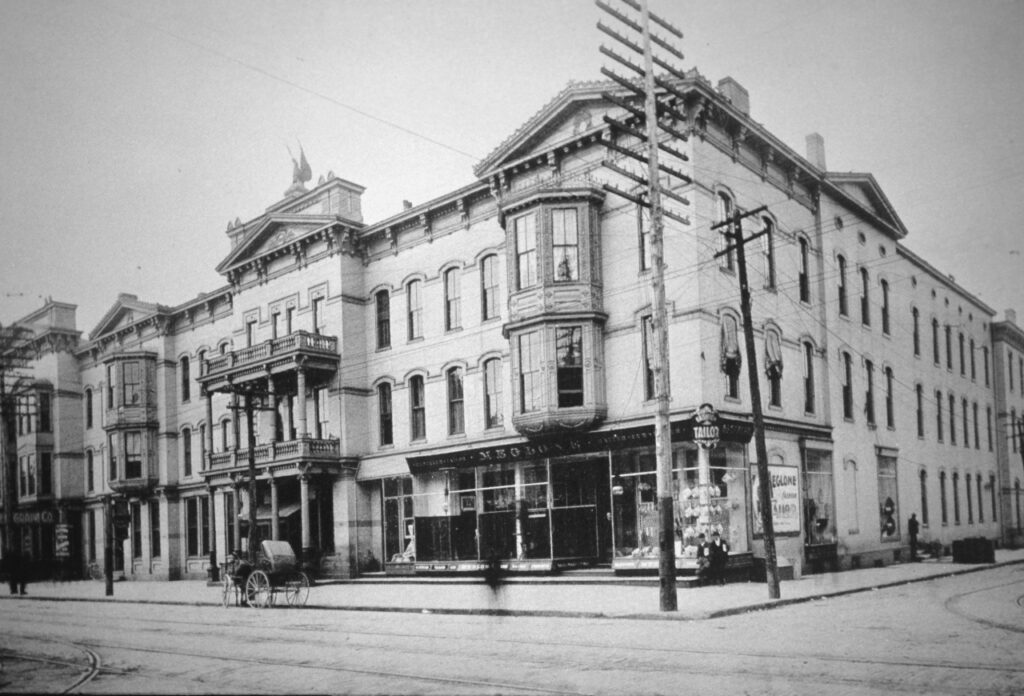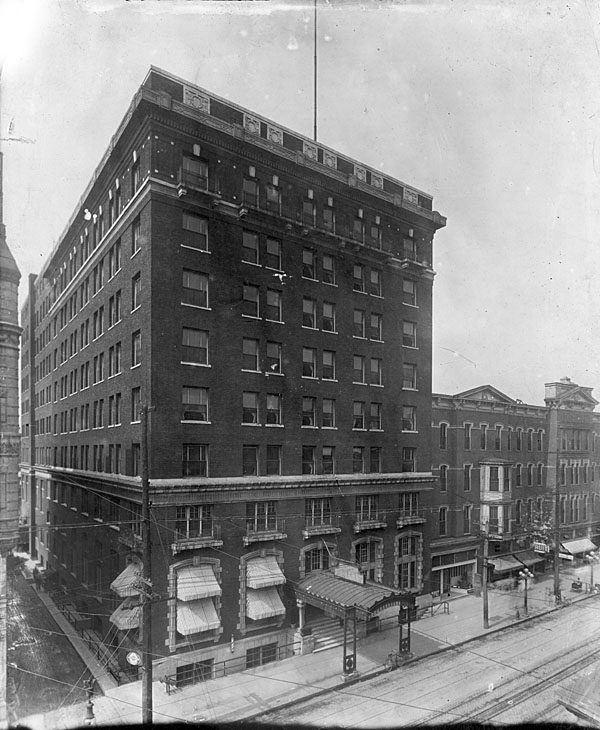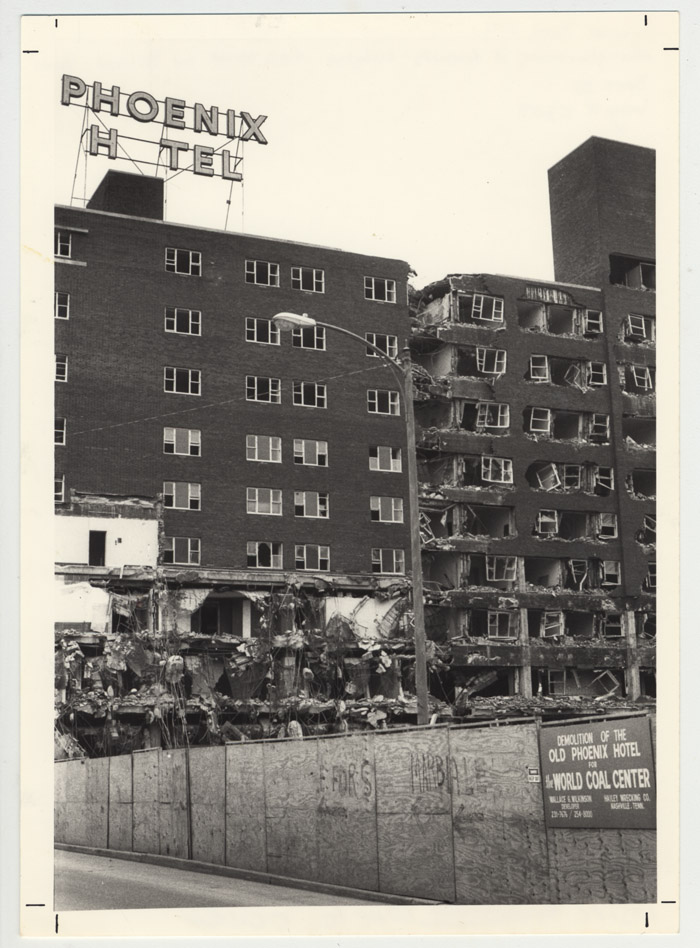 |
| Phoenix Hotel, 1879 Clay Lancaster Collection |
Lexington’s history. Archival photographs juxtaposed with contemporary pictures help to give the clearest
glimpse into Lexington’s history when a building still stands. In those cases where (lamentably) a building has been razed, one’s best sources are research of historic newspapers, books, photographs, and stories.
 |
| Phoenix Hotel, undated Frank C. Dunn |
stood what was possibly one of Lexington’s most architecturally and historically important buildings: the
Phoenix Hotel. Constructed in 1897 on the footprint of no less than three taverns, the Phoenix
Hotel was established in 1820. Its name was purportedly derived from the hotel surviving a fire in the 1820s.
presidents, the location of the Morgan’s Men Association’s inception (1868),
the Kiwanis Club of Lexington’s inception (1919), and the home of WVLK-AM for
33 years (1947-1980).
taverns (most famously, the Postlethwaite’s Tavern), the Phoenix was quite possibly the longest standing hostelry this side
of the Allegheny Mountains. Its demolition in 1981 ended this reign, making room for the
World Coal Center.
 |
| Demolition of the Phoenix Hotel ca. 1981 (note the billboard) Kentuckiana Digital Library |
Conceived by Wallace Wilkinson, later governor from 1987-1991, the World Coal Center (WCC) was to house the corporate headquarters of major coal companies. Depending on the source and plan referenced, the tower was to be 50, 41, or 25 stories beginning with first floor retail space. The demolition of the Phoenix Hotel jumpstarted a statewide discourse on politics,
coal, and preservation.
Despite Kentucky’s coalfields being found in the hills of eastern Kentucky, Wilkinson argued that Lexington was the center of commercial activity for the eastern portion of the state. Building his WCC in the coal fields was not viable. In October 1981,
an op-ed in the Bowling Green Daily News belied Wilkinson’s defense of the coal center suggesting that the choice of location was just “another ‘slap in the face’ to coalfield residents” and that the project would only perpetuate the removal of resources from eastern Kentucky.
The WCC ultimately succumbed to lack of funding. Its shadow hangs over another project that has stumbled from lack of resources: Centrepointe. While the loss of the Phoenix Hotel is thirty years in the rearview of Lexington’s memory, the loss of Morton’s Row is much fresher in the mind of Lexingtonians. The excitement for the Jeanne Gang re-design (combined with disappointment of proceeding without her) and the close eye Lexington keeps on every development demonstrates that some lessons were learned from the loss of the Phoenix Hotel.
